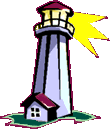|
|
|




|
Tabernacles
|
|
Jewish Calendar |
Tishri 15-22 |
|
Gregorian Calendar |
September/October |
|
Spring or Fall |
Fall Feast |
|
Scripture |
Leviticus 23:39
II Chronicles 8:13
Ezra 3:4
Zechariah 14:16 |
|
Significance |
Tabernacles speaks of the day when the Son of God will tabernacle among men,
wipe away every tear, and bring in the "golden age" which men have dreamed of
since time immemorial. |
The seventh and final Feast of the Lord is the Feast of Tabernacles.
It occurs five days after the Day of Atonement
on the fifteenth of Tishri (October).
This feast is also called
the Feast of Ingathering (Exodus 23:16; 34:22), the Feast to the Lord (Leviticus 23:39;
Judges 21:9), the Feast of Booths, or simply "the feast" (Leviticus 23:36; Deuteronomy 16:13; I Kings 8:2; II Chronicles 5:3, 7:8;
Nehemiah 8:14; Isaiah 30:29; Ezekiel 45:23,25) because it was so well-known.
After the return from Exile, Ezra read the law and led the Israelites in acts of
penitence during the Feast of Tabernacles (Nehemiah 8:13-18).
The dedication of Solomon's'
Temple also took place (I Kings 8:2) during this feast. Later, Josephus referred to the Feast of Tabernacles as
the holiest and greatest of the Hebrew feasts.
On the first day of the feast, each participant had to collect twigs of myrtle, willow, and palm in the area
of Jerusalem for construction of
their booth (Nehemiah 8:13-18). These "huts" or "booths" were
constructed from bulrushes as joyful reminders of the temporary housing erected by their
forefathers during the Exodus wanderings (Leviticus 23:40-41; Deuteronomy 16:14).
The "booth" in Scripture is a symbol of protection, preservation, and shelter from
heat and storm (Psalm 27:5; 31:20; Isaiah 4:6). The rejoicing community included
family, servants, orphans, widows, Levites, and sojourners (Deuteronomy 16:13-15).
Besides the construction of the booths, other festivities included the ingathering of the labor of the field (Exodus 23:16),
the ingathering of the threshing floor and winepress (Deuteronomy 16:13), and
the ingathering of the fruit of the earth (Leviticus 23:39),
Samples of the fall crop were hung in each family's booth to acknowledge God's
faithfulness in providing for
His people.
On the eighth and final day of the feast, the high priest
of Israel, in a great processional made up of priests and tens of thousands of worshipers,
descended from the Temple Mount to pause briefly at the Pool of Siloam. A pitcher was
filled with water, and the procession continued via a different route back to the Temple
Mount. Here, in the midst of great ceremony, the high priest poured the water out of the
pitcher onto the altar.
Since in Israel the rains normally stop in March, there is no rain
for almost seven months! If God does not provide the "early" rains in October and November,
there will be no spring crop, and famine is at the doorstep. This ceremony, then, was
intended to invoke God's blessing on the nation by providing life-giving water.
It is in connection with the Feast of Tabernacles and this eighth day that the gospel
of John records a fascinating event. John wrote: "In the last day (eighth day), that great
day of the feast, Jesus stood and cried out, saying, If any man thirst, let him come
unto me, and drink. He that believeth on me, as the scripture hath said, out of his
heart shall flow rivers of living water" (John 7:37-38). The Son of God was
saying in the clearest possible way that He alone was the source of life and blessing; that
He could meet every need of the human heart.
Another ritual included the lighting
of huge Menorahs at the Court of the Women. This is the probable background for Jesus'
statement: "I am the light of the world." John 8:12).
The water and the
"pillar of light" provided during the wilderness wandering (when people
dwelt in tabernacles) was temporary and in contrast to the continuing water and
light claimed by Jesus during this feast which commemorated that wandering period.
The eschatological visions which speak of the coming of all nations to worship at
Jerusalem refer to the Feast of Tabernacles on the occasion of their pilgrimage (Zechariah 14:16-21).
This feast speaks eloquently of Christ's millennial Kingdom - of a new
beginning without the ravages of the curse of sin. In that day, the earth will give her
full bounty, all animals will be docile (Isaiah 65:25), armies will no longer march, every man
will sit under his own fig tree (Micah 4:4), and righteousness will become a reality in the
earth.
|
|



 Back to the "Christ-Centered Mall" Back to the "Christ-Centered Mall"

This teaching was written by David Holt Boshart, Jr.
All scans done by Christ-Centered Mall, Inc. are prohibited from being copied.
All applicable copyright© laws apply and are reserved by Christ-Centered Mall.
Web pages copyright© 1998-2006. |
|

 Back to the "Christ-Centered Mall"
Back to the "Christ-Centered Mall"